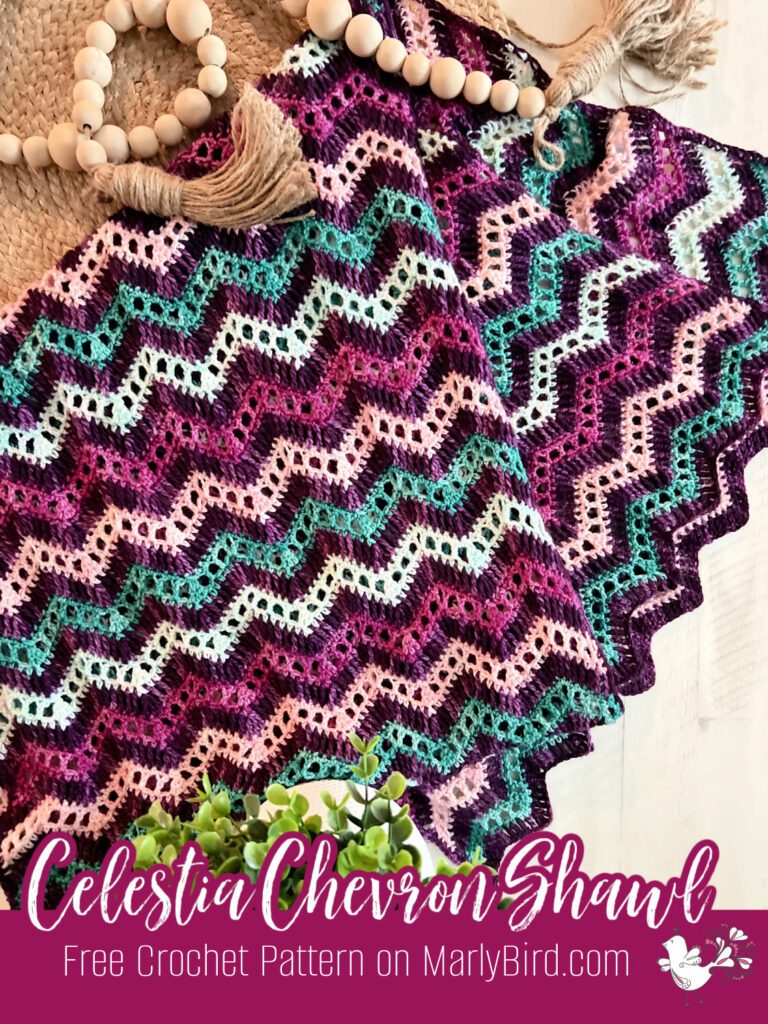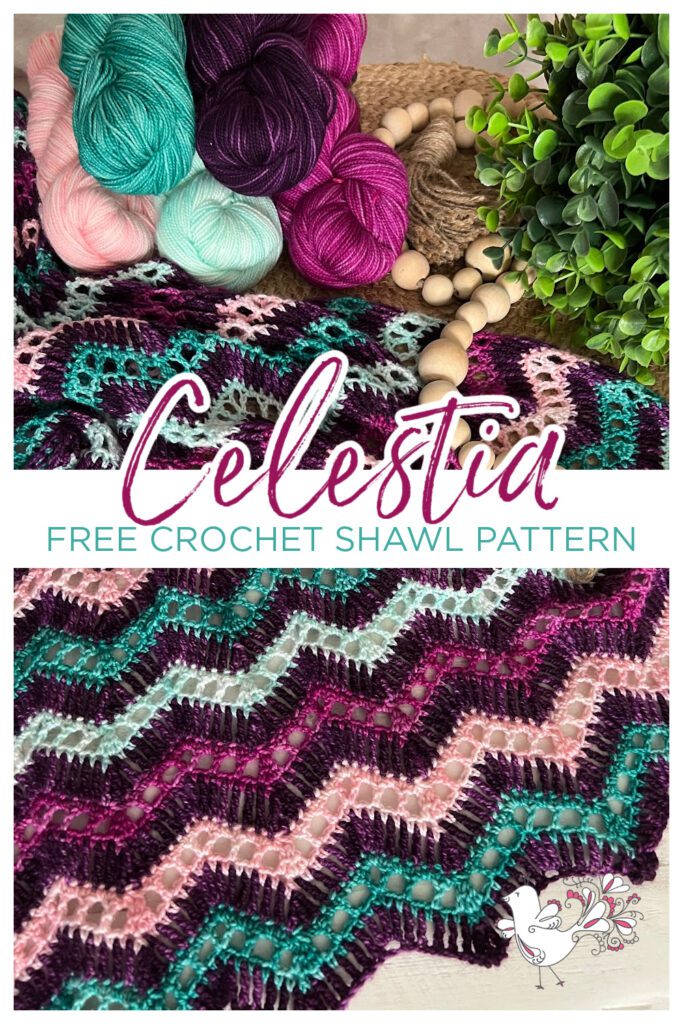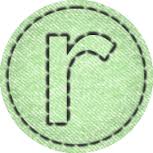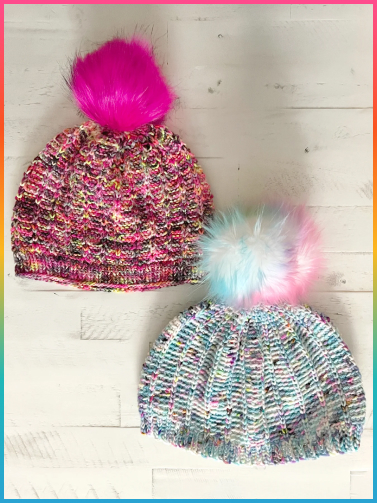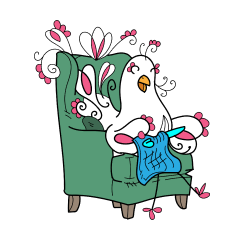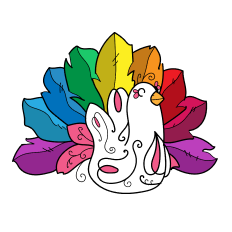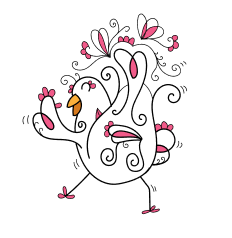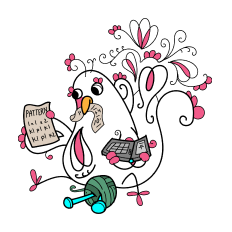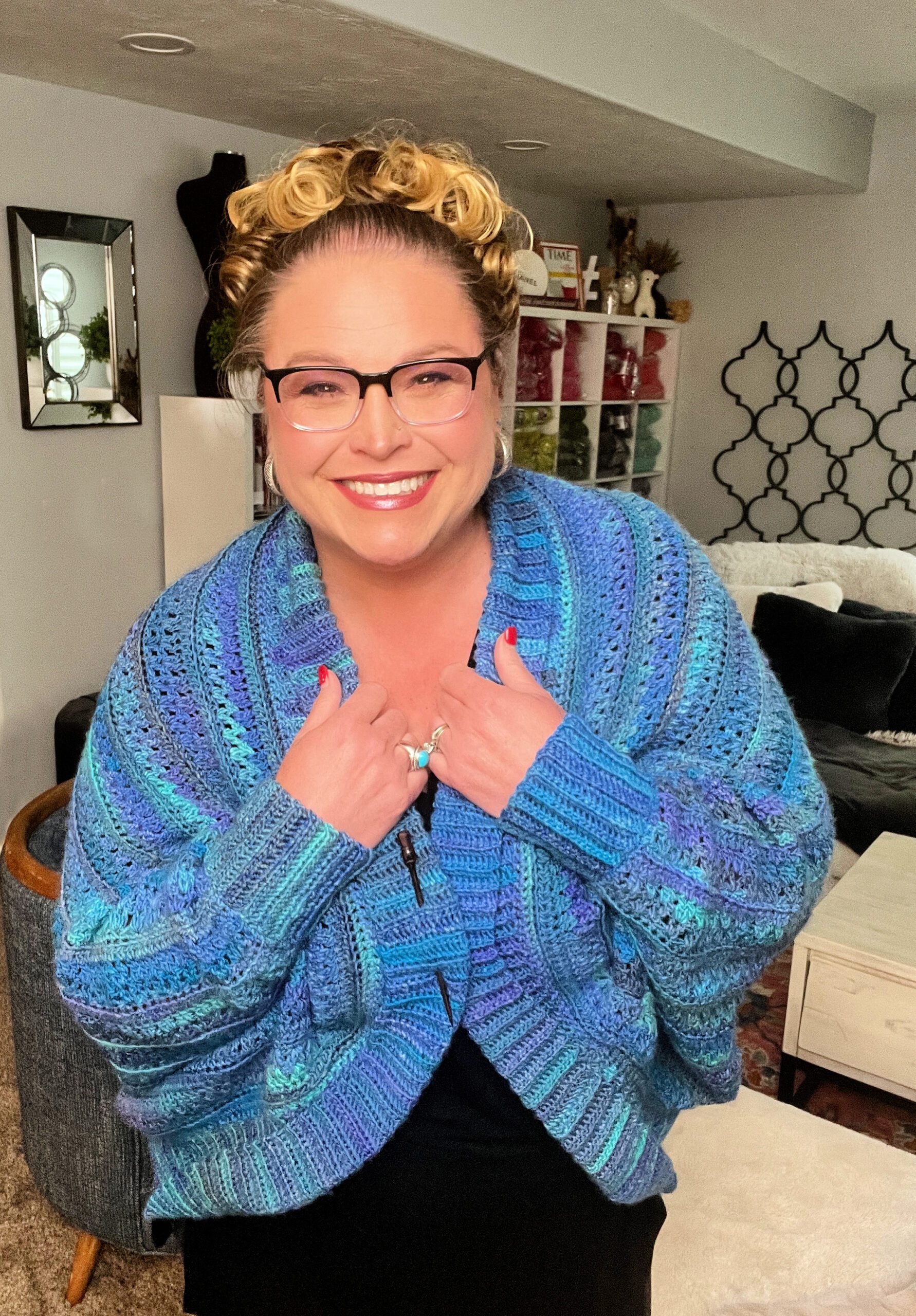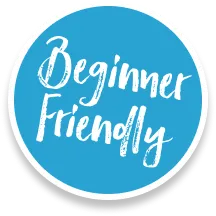Celestia Shawl: Crochet With Fingering Weight Yarn
Have you been itching to get your crochet hooks out and try a new project? Then, check out the Celestia Chevron Crochet Shawl! This fast and fabulous free easy lacy crochet shawl pattern is perfect for beginners and seasoned stitchers alike. Plus, who doesn’t love a quick and easy crochet project? Crochet with fingering weight yarn for this shawl and you’ll feel like a pro in no time.
And let’s be real, the best part of crocheting is having the finished product to show off. With this stunning accessory, you’ll have friends and family begging you to make one for them too. So grab your hook and let’s get stitching!
Free pattern is available in this blog post, or purchase the ad-free pdf in the Marly Bird Store.
Psst: Favorite and Queue this pattern on Ravelry
How Do You Crochet the Chevron Shawl with Fingering Weight Yarn?
“What is fingering weight yarn?” is a question many knitters and crocheters have, especially newbies. So before we jump into the free chevron crochet shawl pattern, look into fingering weight yarn and sock yarn.
This post is JAM-PACKED with information and a FREE CROCHET PATTERN!
If you’re a new or experienced needleworker, this post will provide valuable information about fingering weight yarn. You’ll find tips for crocheting with CYC Size 1 yarn and project ideas for fingering weight yarn. Not to mention, there’s a free chevron crochet shawl pattern by Marly Bird.
➸ Plus, there is extra information about crochet gauge, how to block crochet, and more!
- How Do You Crochet the Chevron Shawl with Fingering Weight Yarn?
- What is fingering weight yarn?
- Crocheting with Fingering Weight Yarn, or Sock Yarn, Made Easy
- Tips for Crochet with Fingering Weight Yarn
- Does Color Choice Matter When Crocheting with Fingering Weight Yarn?
- What is the best fingering weight yarn?
- Sock Yarn for More Than Just Socks!
- Make a Show Stopping Celestia Chevron Shawl with This Free Easy Lacy Crochet Shawl Pattern
- SKILL LEVEL
- MEASUREMENTS
- MATERIALS
- CROCHET ABBREVIATIONS
- SPECIAL STITCHES
- STITCH DIAGRAM
- NOTES
- VIDEO TUTORIALS
- Celestia Chevron Crochet Shawl Pattern || Free Easy Lacy Crochet Shawl Pattern
- FINISHING
What is fingering weight yarn?
Fingering weight yarn is also known as “superfine yarn”, “sock yarn” and “baby yarn” or 4-ply. The name used depends on the country: UK, Australia or New Zealand. But wherever you are, it’s a thin yet durable material perfect for everyday wear. According to the Craft Yarn Council system of categorization, it falls into Category 1/Super Fine. That means it’s thinner than sport yarn but thicker than lace weight yarn.
What is the difference between fingering weight yarn and sock yarn?
Fingering weight yarn can be used to make socks, but not all fingering weight yarns are considered “sock yarn.”
Sock yarn is usually a blend of different fibers, like wool and nylon. The nylon makes the crochet socks more durable since they’ll be subject to a lot of wear and tear.
So if you’re looking for yarn to make crochet socks, look for something that’s labeled as “sock yarn.” But if you’re looking for fingering weight yarn for a different project, almost any type will do.
Extra Tip: Are you interested in making Classic and Color Crochet Socks? Check out this course in the Marly Bird House!
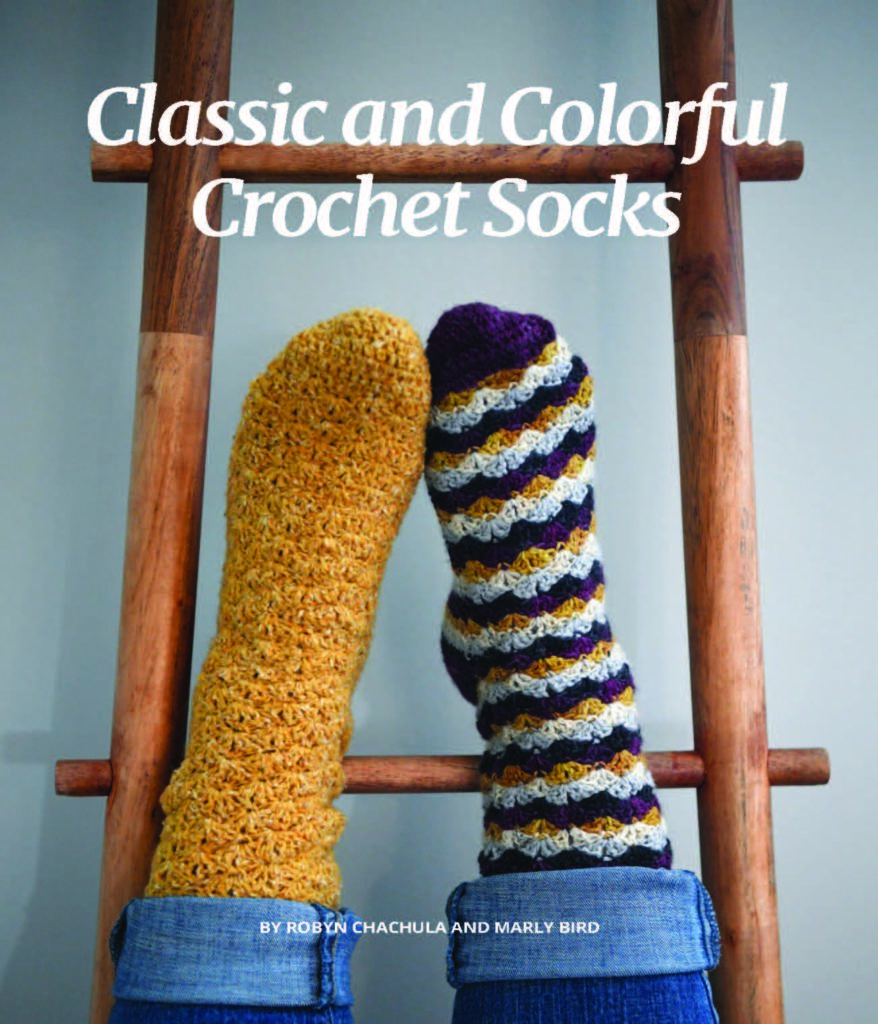

Crocheting with Fingering Weight Yarn, or Sock Yarn, Made Easy
Crocheting with fingering weight yarn offers a unique and delightful crafting experience. Fingering weight yarn is known for its fine texture, allowing you to create delicate and intricate projects. This lightweight yarn is perfect for crafting intricate lacework, delicate accessories, and beautifully detailed garments.
Using a small hook and fingering weight yarn gives you an exquisite stitch definition. You can really showcase the intricate patterns and textures of your crochet work. While it may require a bit more patience and attention to detail, the result is worth it. You’ll get a stunning and delicate piece that will impress and inspire.
Whether you’re making a lightweight shawl, lacy scarf, or delicate baby garments, the possibilities are endless with fingering weight yarn. Experiment with different crochet stitch patterns and color combinations to bring your creative visions to life. Crocheting with fingering weight yarn opens up a world of possibilities. Create unique, elegant, and intricate crochet projects treasured for years to come.
What is the Recommended Hook Size for Fingering Weight or Sock Yarn?
Fingering weight yarn is a lightweight yarn perfect for creating delicate and intricate designs. When crocheting with fingering weight yarn, it’s crucial to use the right hook to achieve the desired tension and drape. Select a suitable crochet hook, such as a size C/2 (2.75mm) or D/3 (3.25mm) hook, depending on your personal gauge preference.
Though there are general guidelines for hook sizes, it’s best to check the individual pattern you’re using. Designers might ask for a larger or smaller size depending on their desired fabric tension. If they want a looser material they may suggest going up in size and vice versa with a denser texture. This applies to crocheted items such as chevron blankets, triangle shawls, baby blankets, and any other crocheted item.
Marly’s Favorite Hooks – these large handles make holding the smaller hooks easier!
What is the Best Crochet Gauge for Fingering Weight Yarn?
To understand gauge, you must know that the size of your crochet hook determines the size of stitches you make. As a stitch is created, all loops made to complete it should be equal in size to the loop on your hook. This means that when making a gauge swatch, both yarn and hook sizes will influence its overall dimensions.
Yarn labels typically offer a general gauge measurement based on the CYC standards. According to them, the typical gauge for this yarn is 21–32 stitches in crochet using single crochet stitches and a size 2.25 mm – 3.5 mm hook.


But, as I said before, the suggested hook to use with fingering yarn is just that, a suggestion. It’s a designer’s prerogative to change to use a larger hook. This gives a more lacy look. Using a smaller hook gives a more dense fabric.
So the answer to “What is the best gauge?” is…there isn’t one. It depends on the fabric you want for the finished crochet project.
When in Doubt, Make a Gauge Swatch
To determine your own crochet gauge, you will need to make a “gauge swatch.” You’ll measure the number of crochet stitches or crochet pattern stitches across a 4-inch section. You then use this measurement to estimate how many stitches should fit within one inch or four inches.
Here’s how to do it:
To ensure accuracy when following a crochet pattern, create a gauge swatch that uses the same stitch as your project. A standard 4-inch size is usually recommended in patterns. For extra precision, it’s best to make one 6 inches square. This allows you to measure the swatch more accurately than if measuring from either end or side edge.
Measuring Your Gauge Swatch
Once you complete your crochet swatch, measure the pre-blocked swatch and write down your numbers. You can use this number later. Then wash and block the swatch to the pattern or yarn instructions to get the most accurate crochet gauge. I love to use these blocking mats and these comb pins for all my blocking needs.
Extra Tip: Wet blocking the swatch allows you to test the colorfastness of the yarn. This ensures your colors won’t bleed into each other.
It’s very important ❣️ you allow the blocked swatch to dry completely. Unpin it from the mats before measuring the gauge.
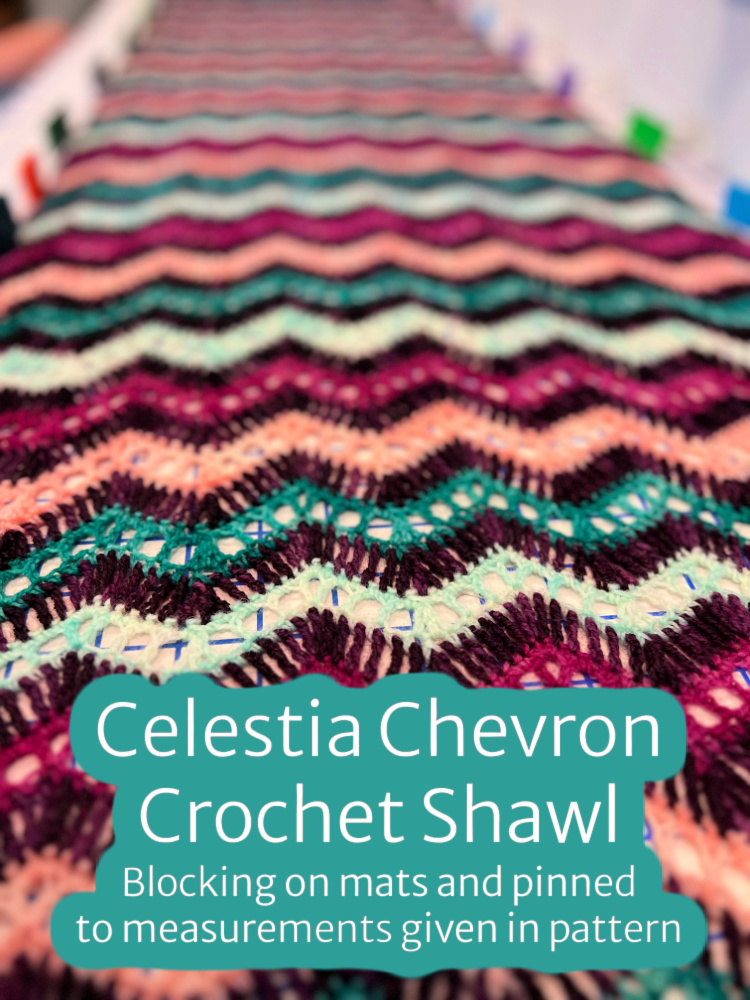

Measuring a crochet gauge doesn’t have to be complicated. A ruler can do the job, but we prefer using a Crochet Gauge Square. This small square is used to calculate stitch lengths. You can check whether your stitches are too tight or loose for the yarn weight and hook size you’re using. You can also use it for a chevron blanket, shawl pattern, baby blanket, rectangle shawl, triangle shawl, or summer shawl.
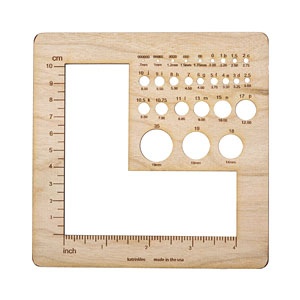

To check the gauge of your crochet, place the crochet gauge square in the middle of your blocked crochet piece. Count across for how many stitches and your row count is from top to bottom. Divide those numbers by four to get the number of stitches or rows per inch. Compare this with the pattern instructions or yarn label – they should match exactly for your project to turn out correctly.
Tips for Crochet with Fingering Weight Yarn
Keeping Tension with Crochet Hook and Small Weight Yarn
When working with fingering weight yarn for crochet shawls, crochet wraps, or any project in this yarn-weight category, maintaining the right tension is essential for a great drape.
Tension refers to the tightness or looseness of your stitches. It plays a significant role in determining the overall appearance and flow of your finished piece. To ensure consistent tension throughout your work, start by choosing an appropriate hook size (as mentioned above). Opting for a slightly smaller hook can help create a tighter tension, preventing the stitches from becoming too loose.
Practice consistency in your stitch size by paying attention to the pressure applied while crocheting. Strive for uniformity in your stitches to achieve a polished and professional look. Maintaining correct tension enhances the drape of your shawl or wrap. It allows the fingering weight yarn to flow gracefully and showcase the intricate crochet stitch patterns.
Remember to relax your hands periodically to prevent tension buildup and to take breaks when needed. With patience and practice, you can master the art of maintaining the perfect tension. Create stunning crochet pieces with fingering weight yarn!
Extra Gauge Swatch Tip: If you have created a gauge swatch, use its pre-blocked measurements to measure the workpiece as it progresses. Do not use your blocked swatch for this purpose since the piece is yet to be blocked.
Benefits of Stitch Markers in Crochet: Keeping Edges Straight, Stitch Count, + More
In addition to maintaining tension, removable stitch markers can be incredibly helpful for crocheting with fingering weight yarn. These small, handy tools help keep your place in the project, ensuring clean edges. Highlight important sections of a pattern where increases or decreases are required, such as in a chevron crochet pattern.
Marly’s Favorite Stitch: have you tried the Stacked Double Crochet?
With large projects like crochet afghans, baby blankets, crochet sweaters, crochet shawls, or wraps, it’s easy to lose track of the pattern. Removable stitch markers at key points (beginning or end of a row or pattern repeat) can keep you on track and avoid confusion. This is particularly useful when working on complex crochet stitch patterns or when taking breaks during your project. If you set your work aside, removable markers will help you pick up where you left off without guesswork.
Stitch Markers For Edges
Removable stitch markers are also beneficial for maintaining clean edges in your crochet work. When working on a shawl or wrap with fingering weight yarn, it’s important to keep the edges neat and even. Placing stitch markers at edge stitches or turning chains ensures a consistent stitch count. It also prevents accidental edge increases or decreases. This technique results in a polished and professional finish to your project.
Stitch markers can be particularly valuable in chevron crochet patterns. You can use them in any design where increases or decreases are crucial for shaping. Some examples are a chevron blanket or the Celestia Crochet Chevron Shawl. A stitch marker in the stitch before or after the increase or decrease point creates a visual cue. It prompts you to perform the necessary stitch movement. This ensures your chevron, or other pattern elements, are crisp and well-defined. And straight edges look ao much better!
The Beauty of Blocking A Crochet Project
You had great tension while your project was on your hook. You used stitch markers to keep your place in the crochet pattern. Now it’s time to then finish off by blocking crochet for that polished professional look.
Blocking is a crucial step in the finishing process of your crochet project. Crochet shawls and fingering weight yarn probably benefit the most. When you block a crochet piece, you expose it to moisture and reshape it. This allows the stitches to open up and the true beauty of your work shines through. Size 1 yarn, with its intricate stitch detail, truly comes to life once it’s blocked.
Basic Instructions for Blocking Crochet
Yes, you can block acrylic yarn, but it doesn’t hold its shape unless you add gentle steam. See this video for extra knowledge on the subject.
To begin blocking, you need a sink or basin, wool wash or mild detergent suitable for delicate fibers, blocking boards or mats, rust-proof T-pins or blocking combs, and towels.
❣️These are the same tools you used for the crochet gauge swatch.
Blocking Crochet
- Fill the sink with lukewarm water and add a small amount of wool wash or mild detergent.
- Gently immerse your crochet project in the water, ensuring it is fully saturated.
- Let it soak for about 15-20 minutes to allow the fibers to absorb the moisture.
- After soaking, drain the water and gently press out the excess moisture from your crochet piece. Avoid wringing or twisting the fabric, as this can distort the stitches.
- Lay a clean towel on a flat surface. Place your crochet project on top, and roll it up in the towel to remove any remaining moisture.
- Prepare your blocking boards or mats by aligning them on a flat surface.
- Unroll your crochet project from the towel. Carefully arrange it on the boards, shaping it to the desired measurements. Make sure the edges are straight and even.
- Use rust-proof T-pins or blocking combs to secure the edges and corners. Gently stretch the fabric if needed but do not overstretch!
- Allow your project to air dry completely on the blocking boards. The drying time may vary depending on the humidity level in your environment and the fiber content of the yarn.
- Once dry, remove the T-pins, and marvel at the transformation your blocked crochet project has undergone.
By the way, I have an exclusive video tutorial on how to block your crochet projects. It was included in the BiCrafty Games course in the MarlyBirdHouse. This gives you visual guidance and some additional tips for successful blocking. I am adding a link HERE for free to help you with your blocking needs.
Caution When Blocking
⛔️ A word of caution: While blocking enhances the beauty of your crochet project, it’s important to consider the colorfastness of your yarn. Some yarns may bleed or release color when exposed to water. To avoid any color transfer, perform a colorfastness test with your gauge swatch.
Or you could moisten a small section of your project and place it on a clean white cloth or towel. If there’s no color bleeding, your yarn is safe to block. However, if you notice color transfer, it’s best to avoid wet blocking and consider alternative methods such as steam blocking.
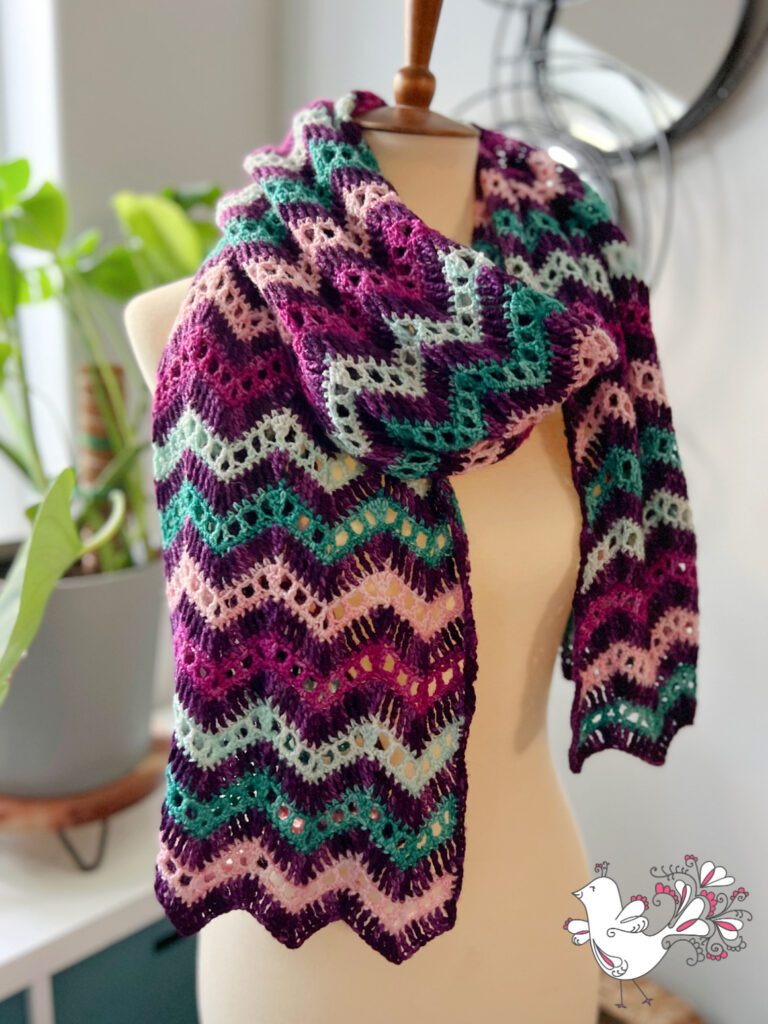

Does Color Choice Matter When Crocheting with Fingering Weight Yarn?
In general, color choice doesn’t have a significant impact when crocheting with fingering weight yarn. The focus is often on the delicate stitchwork and intricate patterns rather than the specific color of the yarn. However, there are certain scenarios where color choice does matter. Consider beginners, those with visual impairments, or when the visibility of stitches is a priority.
For beginners: Use a high-contrast color combination, such as a solid yarn with a contrasting stitch marker or stitch holder. It can help differentiate between stitches and make it easier to follow the pattern. This is especially beneficial when working with intricate stitch patterns or complex designs.
Similarly, for those with visual impairments, colors with high contrast or variegated yarns with distinct color changes can make it easier to see individual stitches. This allows for better stitch visibility and reduces the risk of making mistakes.
Solid or Variegated?
When considering the difference between variegated yarn and solid yarn, variegated yarn can produce stunning visual effects in your work. The color changes within the yarn can create unique patterns (check out color pooling) and add depth to your stitches. However, the stitch detail may not be as prominent in variegated yarn because of the color variations. If you want the stitches to show up prominently, solid-colored yarn is generally a better choice. Solid yarn allows the intricate stitchwork to take center stage and showcases the individual texture and patterns more clearly.
Ultimately, color choice when crocheting with fingering weight yarn depends on personal preference. The purpose of the project and any specific visibility requirements also feature. Whether you opt for solid colors, variegated yarns, or high-contrast combinations, the beauty of your crochet work will shine through. Just enjoy the process and feel inspired by the colors you choose.
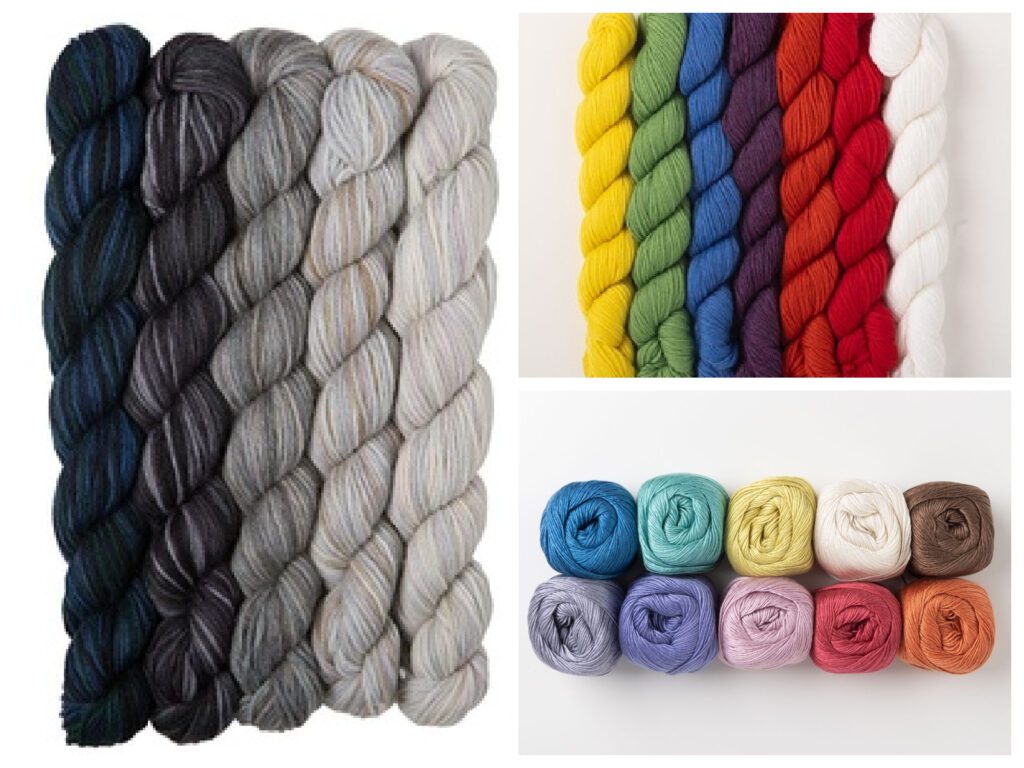

High Contrast and Grayscale Color Yarn
High contrast colors and grayscale options of fingering weight yarn can be particularly beneficial for crocheters with low vision. Using bold, high-contrast colors, such as black and white or vibrant color combinations, can enhance visibility. It’s easier to distinguish individual stitches and pattern repeats. The stark contrast between the colors creates a clear definition, making it simpler to follow instructions and track your progress.
Additionally, grayscale or neutral colorways provide a subtle contrast. This allows crocheters with low vision to discern stitch details without overwhelming the eyes. When choosing fingering weight yarn for low-vision crocheters, choosing high contrast or grayscale options can improve the crocheting experience. This helps foster greater independence in creating beautiful and intricate projects.
What is the best fingering weight yarn?
It can be challenging to choose the right fingering weight yarn for your project, depending on budget and personal preferences. With such a wide array of types and brands available, you’ll need to decide which one suits you best.
If you’re looking for a budget-friendly option, try WeCrochet Hawthorne or WeCrochet Stroll. Here’s a list of all the awesome fingering weight yarn from WeCrochet. For something a little nicer, try Malabrigo Sock yarn or splurge on Madelinetosh Pashmina Yarn!
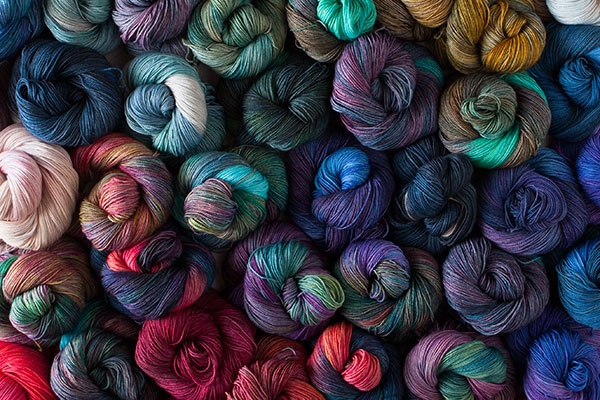

Sock Yarn for More Than Just Socks!
Sock yarn is usually the same weight as fingering weight yarn. It has a fine texture, is durable, and is often associated with knitting or crocheting socks. However, this versatile yarn can be used for much more than just creating cozy footwear. Now we’ll explore the various ways you can use sock yarn. Make beautiful and functional projects beyond socks, such as crochet rectangle shawls or a baby blanket.
Sock Yarn Project Suggestions
- Crochet Shawls and Wraps: Sock yarn is an excellent choice for creating lightweight and elegant shawls or wraps. Add fine-weight yarn to intricate stitch patterns and delicate lacework, and you get a stunning accessory that drapes beautifully. The durability of sock yarn ensures your shawl will withstand everyday use and retain its shape over time.
- Crochet Scarves and Crochet Cowls: Add a touch of luxury to your neckwear with sock yarn. Crocheting or knitting scarves and cowls using sock yarn gives them a delicate, airy feel while they’re still warm and comfortable. Choose solid or variegated colors for interesting patterns and texture variations that’ll make your accessories outstanding.
- Crochet Baby Garments and Accessories: Sock yarn is perfect for making soft and cozy baby garments and accessories. From tiny cardigans and sweaters to hats and booties, sock yarn ensures a comfortable fit for newborns and infants. Its durability and easy-care properties make it ideal for items that require frequent washing.
- Crochet Home Decor: Explore sock yarn for home decor projects such as blankets, cushions, and even decorative baskets. The color range and longevity of sock yarn make it an excellent choice for adding color and texture to your living space. Create stunning afghans or small accent pieces using various stitch patterns to personalize your home decor.
- Crochet Amigurumi and Toys: Sock yarn’s strength and smoothness make it ideal for crafting adorable amigurumi toys. Its fine weight allows for intricate detailing, and its durability ensures that your creations will withstand hours of playtime. Delight children and adults alike with charming crocheted or knitted toys made from sock yarn.
The versatility of sock yarn extends far beyond socks! It’s a favorite among crafters for a wide variety of projects. Whether you’re creating shawls, scarves, baby items, home decor, or amigurumi, sock yarn will help you achieve beautiful results.
Make a Show Stopping Celestia Chevron Shawl with This Free Easy Lacy Crochet Shawl Pattern
Take your crochet game to the next level! Learn how you can make an exquisitely beautiful, free easy lacy crochet shawl pattern with fingering weight yarn. It’s perfect for those bits of sock yarn scraps, advent calendar mini hanks, or balls of hand-dyed sock yarn you love. Get creative and be inspired with this lacy crochet chevron stitch pattern today!
SKILL LEVEL
Adventurous Beginner
MEASUREMENTS
Finished Measurements
Shawl is 18.5” [47 cm] wide by 74” [188 cm] long.
Gauge
28 sts (2 chevrons) x 12 rows in stitch pattern = 5.25” [13.5 cm] x 4.25” [11 cm]; use any size hook to obtain the gauge.
MATERIALS
Yarn
WeCrochet, Hawthorne Fingering Weight (80% superwash fine highland wool/ 20% polyamide, 357 yds / 326 m, 3.5 oz/ 100 g, CYCA# 1 lace) :
Color A: #28626 Equinox Kettle Dye, 3 hanks
Color B: #26693 Poseidon Kettle Dye, 1 hank
Color C: #26693 Daphne Kettle Dye, 1 hank
Color D: #28625 Turkish Delight Kettle Dye, 1 hank
Color E: #28624 Nymph Kettle Dye, 1 hank
Hook
Size E/4 [3.5 mm]
Notions
- Stitch markers
- Tapestry needle
- Blocking Mats and Blocking Pins
- Spray water bottle for blocking (optional)
CROCHET ABBREVIATIONS
Ch – Chain(s)
Dc – Double Crochet
Dc2tog – Double Crochet Two Together
Dc3tog – Double Crochet Three Together
Sc – Single Crochet
Sc2tog – Single Crochet Two Together
Sc3tog – Single Crochet Three Together
Sp(s) – Space(s)
St(s) – Stitch(es)
Tch – Turning Chain
Tr – Treble Crochet
Tr2tog – Treble Crochet Two Together
Tr3tog – Treble Crochet Three Together
WS – Wrong Side
SPECIAL STITCHES
⭐️ Single Crochet 2 Together (sc2tog): *Insert hook into indicated stitch, yarn over and pull up a loop; repeat from * in next stitch indicated, yarn over and draw through all 3 loops on hook.
⭐️ Single Crochet 3 Together (sc3tog): *Insert hook into indicated stitch, yarn over and pull up a loop; repeat from * in next 2 stitches indicated, yarn over and draw through all 4 loops on hook.
⭐️Double Crochet 2 Together (dc2tog): *Yarn over hook, insert hook into indicated st, yarn over and pull up a loop, yarn over and draw through 2 loops on hook; repeat from * in next st indicated, yarn over and draw through all 3 loops on hook.
⭐️Double Crochet 3 Together (dc3tog): *Yarn over hook, insert hook into indicated st, yarn over and pull up a loop, yarn over and draw through 2 loops on hook; repeat from * in next 2 sts indicated, yarn over and draw through all 4 loops on hook.
⭐️Treble Crochet 2 Together (tr2tog): *Yarn over hook twice, insert hook into indicated st, yarn over and pull up a loop, [yarn over and draw through 2 loops on hook] twice; repeat from * in next st indicated, yarn over and draw through all 3 loops on hook.
⭐️Treble Crochet 3 Together (tr3tog): *Yarn over hook twice, insert hook into indicated st, yarn over and pull up a loop, [yarn over and draw through 2 loops on hook] twice; repeat from * in next 2 sts indicated, yarn over and draw through all 4 loops on hook.
STITCH DIAGRAM
Only available in the Ad-Free PDF. Upgrade now!
NOTES
- Do not turn after working Color A and stay on the RS. Join a new color on RS in the first stitch of Color A row.
- Make shawl to any length that you desire. You will need to order additional hanks of A if you want a longer shawl.
- Tassels are optional.
VIDEO TUTORIALS
- Weaving In Ends >> Click Here for Video Help <<
- Blocking >> Click Here for Video Help <<
- Reading Crochet Stitch Diagrams >> Click Here for Video Help <<
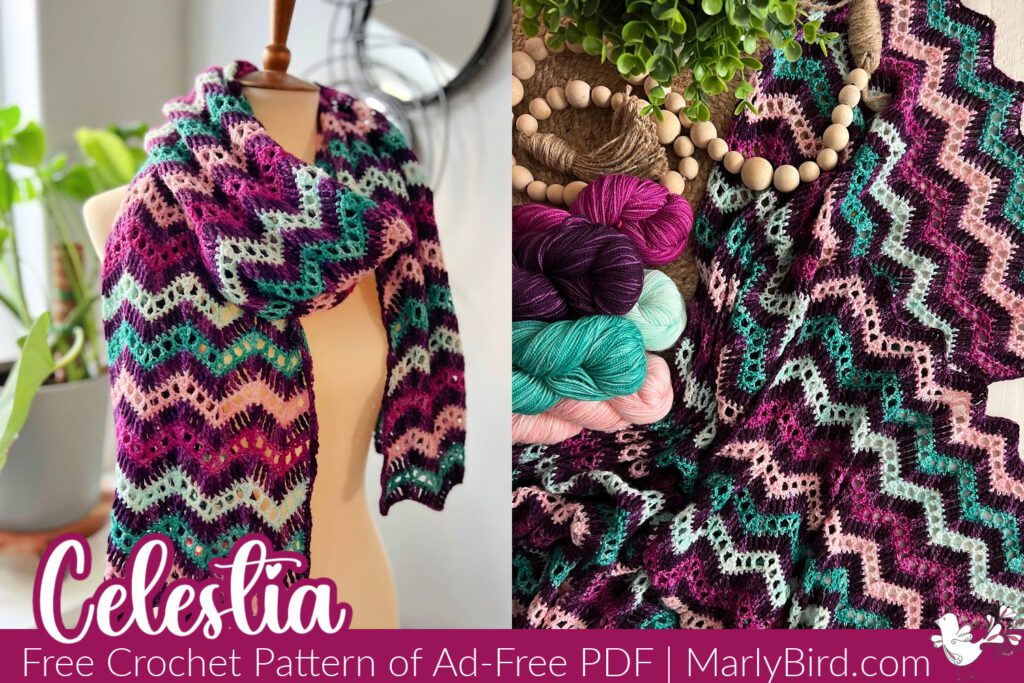

Purchase the Ad-Free PDF Pattern Here
Celestia Chevron Crochet Shawl Pattern || Free Easy Lacy Crochet Shawl Pattern
Chain 102 with color A.
Row 1: Tr in 5th ch from hook, *tr in next 5 ch, 3 tr in next ch, tr in next 5 ch, tr3tog over next 3 ch; repeat from * across to last 13 ch, tr in next 5 ch, 3 tr in next ch, tr in next 5 ch, tr2tog over last 2 ch, fasten off color A. Do not turn — 99 sts.
Row 2: Join color B to first st of previous row, sc2tog over first sc and space between prev and next st, *[sc in space between prev and next st] 6 times, sc in next st, [sc in space between prev and next st] 6 times**, sc2tog in space between prev and next 2 sts; repeat from * across ending at ** at last st, sc2tog in space between prev and last st and in last st, turn.
Row 3: Ch 2, skip first st, dc in next sc, *[ch 1, skip next sc, dc in next sc] twice, ch 1, skip next sc, (dc, ch 1, dc) in next sc, [ch 1, skip next sc, dc in next sc] twice, ch 1, skip next sc**, dc3tog over next 3 sc; repeat from * across ending at ** in last 2 sts, dc2tog over last 2 sts, turn.
Row 4: Ch 1, sc2tog over first st and next ch-1 sp, *[sc in next dc, sc in next ch-1 sp] twice, sc in next dc, 3 sc in next ch-1 sp, [sc in next dc, sc in next ch-1 sp] twice, sc in next dc**, sc3tog over next (ch-1 sp, st, ch-1 sp); repeat from * across ending at ** in last ch-1 sp, sc2tog over last ch-1 sp and last st, fasten off color B. Do not turn.
Row 5: Join color A to first st on previous row, ch 3 (does not count as a st), tr in next sc, *tr in next 5 sc, 3 tr in next sc, tr in next 5 sc**, tr3tog over next 3 sc; repeat from * across ending at ** at last 2 sc, tr2tog over last 2 sc, fasten off color A. Do not turn.
Repeat Rows 2-5 51 more times or to desired length change color in following order: C, A, D, A, E, A, B, A
FINISHING
Edging
Join color A to any corner, sc evenly along the long edge. Fasten off, weave in the ends. Repeat on the opposite side.
Blocking
Weave in all ends.
Option 1: Pin shawl to schematic size, spray with water and allow to dry.
Option 2: Wet block shawl as demonstrated in video tutorial. Pin to schematic size and allow to dry.
Tassels
Make 4 tassels, one with each Color B, C, D, and E. Join to each corner.


Thank you for reading our post about crocheting with fingering weight yarn and the Free Celestia Crochet Chevron Shawl. We hope you found it helpful! If you have any questions we didn’t answer, feel free to leave a comment below, and we’ll do our best to help you out. xoxo~Marly Bird

